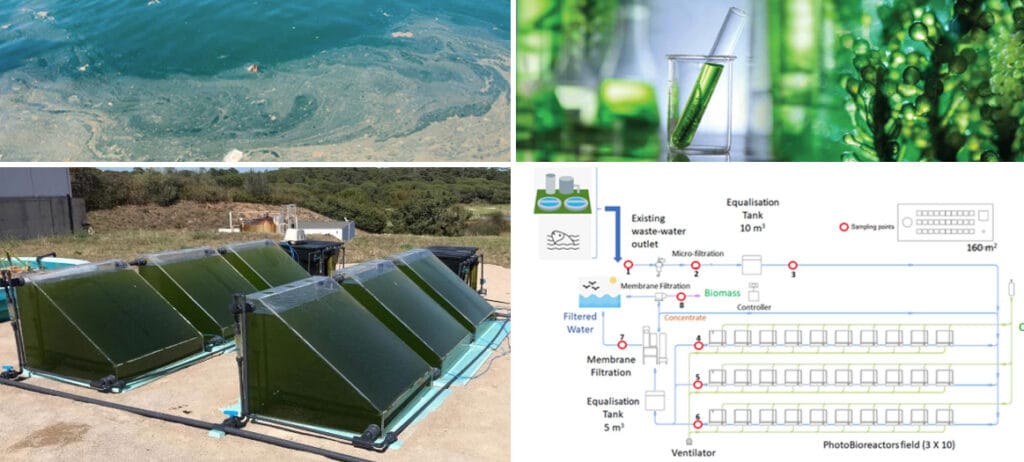CHEMICAL POLLUTION REMEDIATION TECHNOLOGIES BASED ON MICRO-ALGAE SOLUTIONS
TECHNOLOGY

Wastewater and Solid Waste Treatment

CHEMICALS pollution reduction

MINIMISATION
Solution Scope: Water Treatment plants systems (Algae)
Target Contaminant: Microplastics & Nutrients
Solution Provider or Contact Point: RINA Consulting S.p.A. (RINA-C)
Project: RHE-MEDIATION – Responsive hub for long term governance to destress the Mediterranean Sea from chemical pollution
ITS Description: This innovative ITS uses microalgae solutions to combat water pollution by harnessing the unique properties of these organisms. Microalgae have a proven ability to absorb and eliminate pollutants from water, making them a valuable tool in the fight against chemical contamination. The solution involves the development of adaptable and easily reproducible microalgae-based technology plants, specifically designed to mitigate heavy metals, PAHs, PFAS, pharmaceuticals, and pesticides in polluted water, sediments, and wastewater. Additionally, it includes the implementation of replicable microalgae packages in existing cleaning systems and plants to prevent the discharge of polluted water from urban households and industrial facilities into river catchments. Microalgae, being photosynthetic microorganisms, have the ability to thrive in wastewater using available nutrients. Furthermore, they possess the capability to accumulate harmful metals and persistent organic pollutants, such as pharmaceuticals and pesticides, thereby reducing the contamination of receiving water bodies. The resulting microalgal biomass, depending on the level of contamination from the removed pollutants, can be further processed for the production of biofuels, biofertilizers, or valuable compounds. To further enhance its effectiveness, the solution is complemented by both mobile and fixed sensing systems, which can accurately detect and measure the presence of chemical substances in both land and marine waters. The collected data is then transmitted to the EMODnet platform to contribute to the Digital Twin of the Ocean. The solution is currently being demonstrated at three sites (Italy, Greece, and Turkey), with plans to expand to five additional replication sites for further evaluation. With ongoing improvements, the solution is expected to be developed and ready for further testing and possible upscaling by 2026.
Correspondence with BMM OIR (sectoral priorities, R&I activities, gaps, needs): The ITS responds to an R&I gap by focusing on research activities for bioremediation techniques of chemicals and nutrients. It also responds to technological challenges fort the Wastewater & Solid Waste Management sector, particularly when considering algae use for capturing chemicals and contaminants as an innovative technology for wastewater treatment plants.
Source of pictures: https://rhemediation.eu/index.html
Further information: https://rhemediation.eu/demonstration-sites.html; https://rhemediation.eu/demonstration-sites.html; https://cordis.europa.eu/project/id/101113045; https://rhemediation.eu/download/Roll%20UP%20-%20RHE-MEDiation%20technology%20basket.pdf



